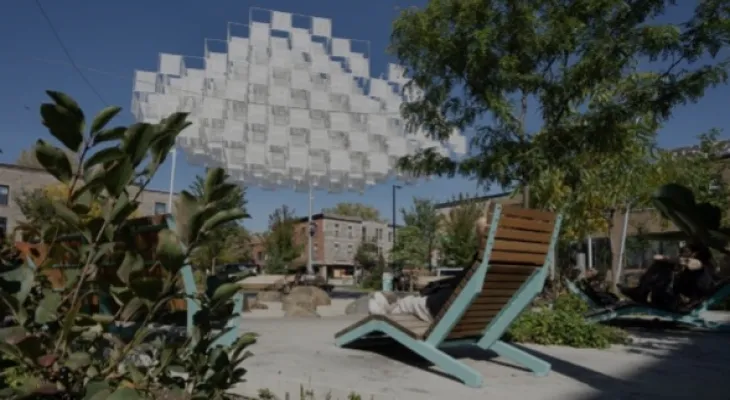Search here
Newspaper
Search here

Arab Canada News
News

Published: October 9, 2023
From the green roofs in Toronto to the rain city strategy in Vancouver, Canadian cities are looking to become "sponge-like" to help mitigate some of the effects of heavy rainfall events.
In Montreal, the city's mayor, Valérie Plante, announced last week that the city plans to develop about 30 additional "sponge parks" designed to capture and absorb rainwater and prevent it from flowing into overwhelmed sewers during heavy rainfall.
The city also stated in a press release that these, along with 400 additional "sponge sidewalks" that include extra planting beds, will help the city retain the equivalent of three Olympic-sized swimming pools of water "at half the cost of underground works."
Melanie Glorieux, a sustainable landscape planner at Rousso Lefebvre, said that while the concept of building a "sponge city" is not new, it is an idea that more and more municipalities are adopting as they deal with extreme weather.
She also added that the idea is to redirect rainwater into low areas or channels planted with trees, shrubs, and grasses, so that more of it is absorbed on the surface and less flows into sewers or lakes or rivers. As an additional benefit, plants filter the water before it enters the system, removing some pollutants that they pick up from the streets.
She said, "First, we reduce the amount of water (sent to the sewers), and second, we improve the quality of what is there."
The goal is to reverse some of the damage done by the past 40 to 50 years of car-dependent urban development, which has involved replacing natural areas that absorb water with impermeable infrastructure like roads and parking lots. Instead of absorption, water is redirected to underground sewage systems, which can be overwhelmed by heavy rainfall, causing flooding and river pollution.
Glorieux stated that the sponge city concept, which first emerged in China, is essentially the opposite: "minimizing runoff and maximizing infiltration."
She also mentioned that green infrastructure can be integrated into landscapes in several ways, ranging from simple tree plantings to rain gardens, swamps, ponds, and more complex bioswale systems that involve layers of filtration. Some projects also replace asphalt with permeable paving that allows better water flow.
Glorieux added that most water retention areas in green infrastructure are designed to accommodate the first 25 mm of rainfall, meaning they should be able to handle around 95 percent of rain.
Comments